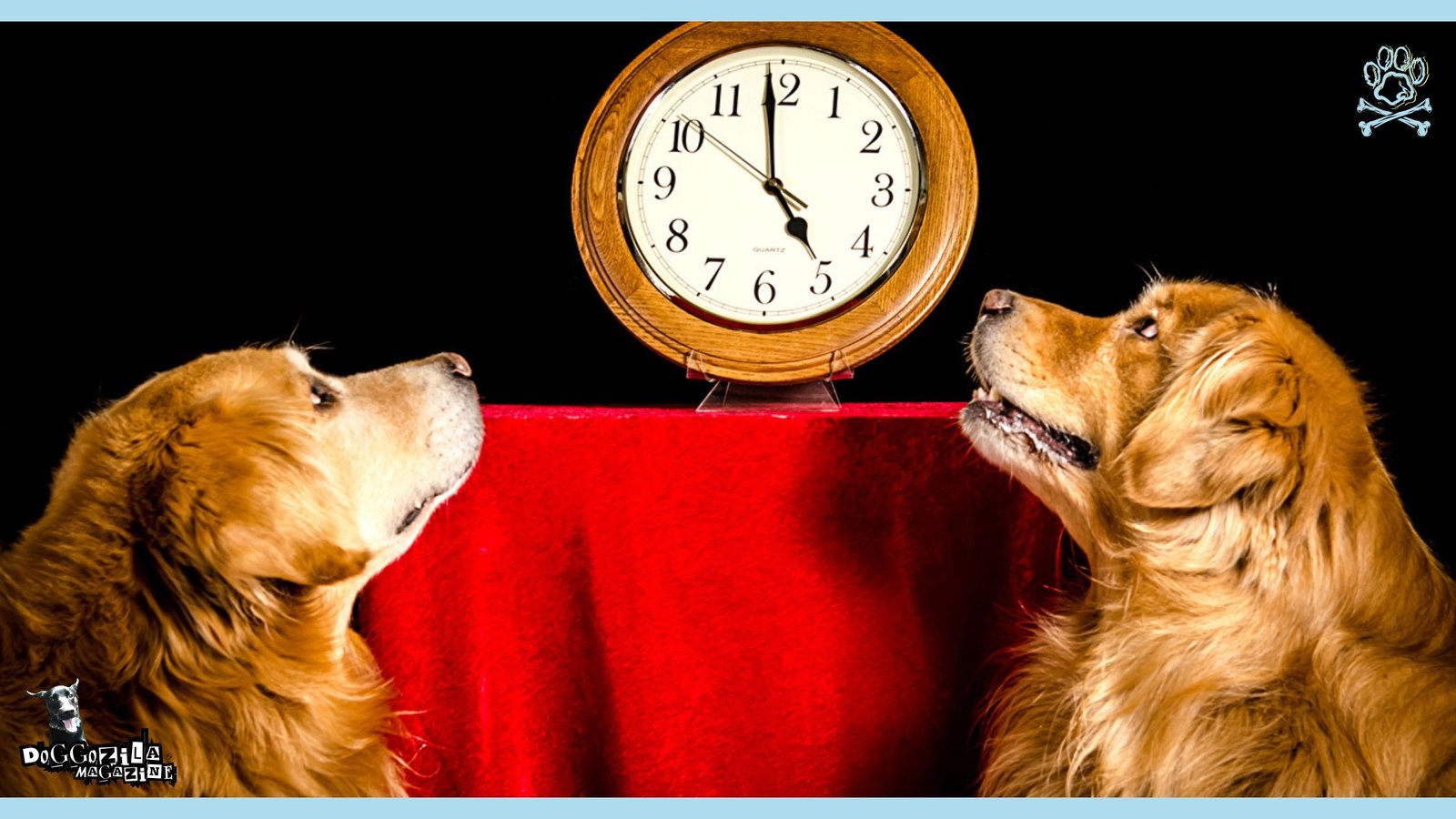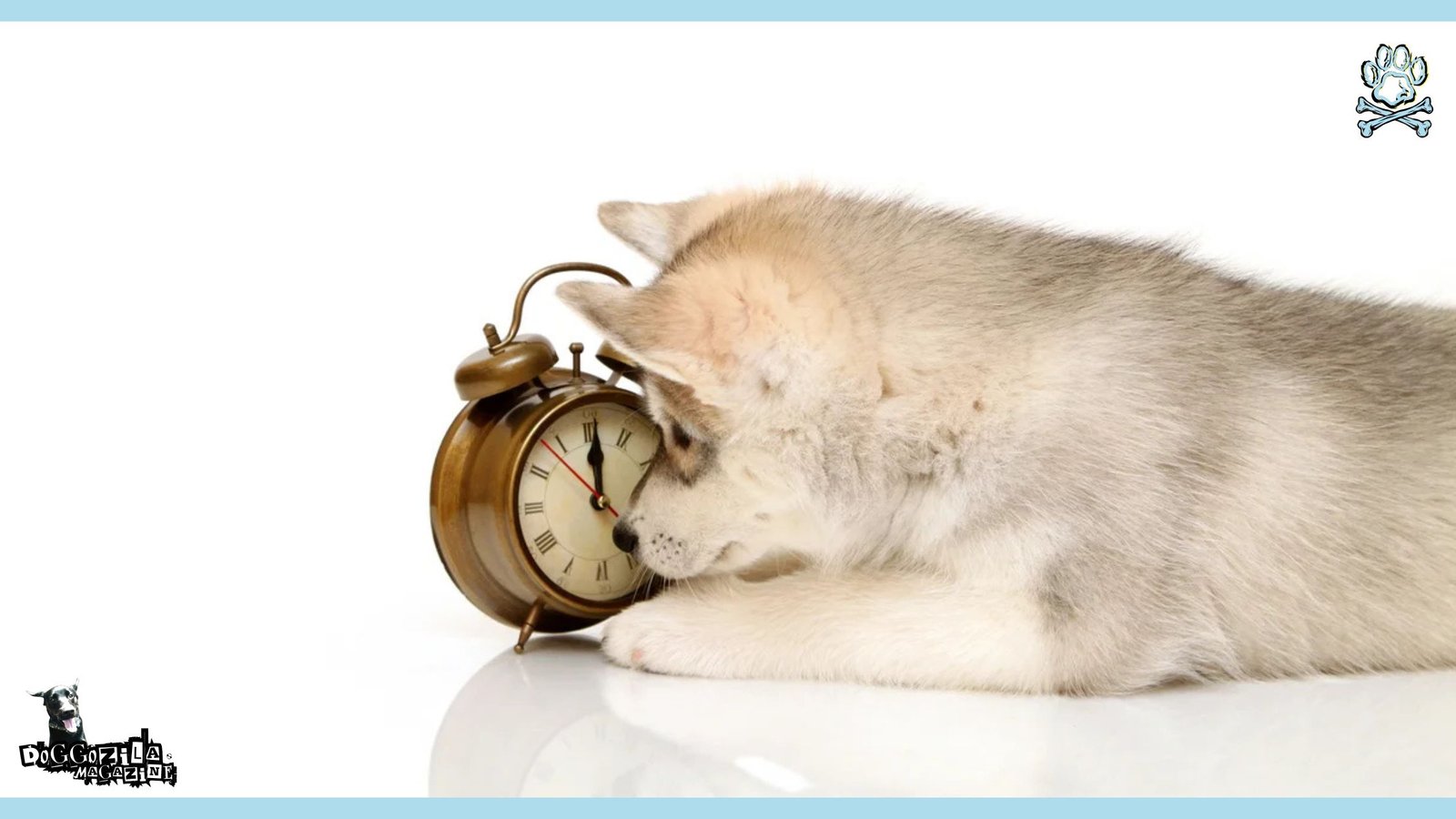The perception of time in dogs is a fascinating subject that offers insights into how these remarkable companions experience the world. While humans understand time largely in terms of minutes and hours, dogs may perceive temporal events through the changes in their environment and routine. Many pet owners may notice that their dogs seem to anticipate certain events, such as meal times or walks, leading to the belief that dogs possess an innate ability to sense impending occurrences.

INTRODUCTION AND RESEARCH ABOUT DOGS AND THEIR TIME PERCEPTION
Research has indicated that dogs interpret time through various indicators, including the duration of certain activities, physical cues, and even their owners’ behavior. For instance, a dog may learn that the sound of a door opening signifies their owner’s arrival home, linking the sound to a specific time of day. This conditioning points to their ability to form associations, suggesting that dogs can recognize patterns in their daily lives that help them navigate their environment.
Dogs read the clock through their scent
As dogs rely heavily on their acute sense of smell, they may also perceive temporal changes through scent. Every moment carries distinct scents that can shift, signaling the passage of time in a way that is almost imperceptible to humans.
Understanding a dog’s perception of time is essential for promoting their emotional and physical well-being. When owners maintain consistent routines, it not only reinforces a dog’s sense of security but also enhances their ability to adjust to various situations.
Moreover, by acknowledging how dogs perceive time, owners can better address their pets’ needs, ensuring they receive adequate stimulation and attention. This knowledge significantly contributes to building a stronger bond between dogs and their owners, fostering a happier and healthier environment for both parties.

THE SCIENCE BEHIND HOW DOGS UNDERSTAND TIME
Understanding how dogs perceive time involves exploring the intricate mechanisms of their sensory processing and neurological functions. Dogs rely heavily on their acute senses, primarily their sense of smell, to gather information about their environment. Their olfactory capabilities enable them to detect scents that have long since faded, which can give them clues about past events.
For instance, a dog might sniff the ground and interpret the lingering scent of a person who walked by hours earlier, effectively connecting the present moment with a more distant time frame.
Dogs Temporal Lobe Help Them Understand Time
Neurologically, studies suggest that dogs have a distinct way of processing temporal information. Research indicates that dogs possess a brain structure called the temporal lobe, which plays a significant role in processing auditory signals and may also contribute to their understanding of time. Unlike humans, who can conceptualize time in abstract forms such as hours or days, dogs might be more attuned to cues from their environment, such as light changes, sounds, and smells, which can indicate the passage of time.
Behaviorally, dogs exhibit various reactions based on their perception of time. For instance, many pet owners have noted that their dogs seem to sense when it is time for a walk, feeding, or play by displaying behaviors associated with those events. This biological clock may help them differentiate between short intervals (such as minutes) and longer ones (such as hours). Moreover, dogs have been observed to react differently to the length of their owner’s absence, indicating an ability to gauge the duration of time spent apart.
Ultimately, while dogs may not perceive time in the same way humans do, their extraordinary abilities in sensory processing and behavioral patterns highlight a fascinating understanding of the temporal aspects of their lives. This insight into canine time perception continues to evolve as researchers delve deeper into the complexities of dog cognition.
🔑 Key Points: These studies have enhanced the understanding of canine cognition, particularly in how dogs perceive and react to time intervals within their daily lives, suggesting a complex interplay of learning, memory, and temporal awareness.

ROUTINES AND SCHEDULES: A DOG’S BEST FRIEND
Dogs are creatures of habit, and their daily lives are significantly influenced by routines and schedules. Establishing consistent patterns helps to create a sense of security and predictability for dogs. This predictability is essential, as it allows them to anticipate various activities throughout the day, such as meals, walks, and playtime. When a dog knows what to expect, it can reduce anxiety and behavioral issues, fostering a healthier and happier canine companion.
Routine Time Schedules Help Dogs to Perceive Time
The bond between dogs and their routines is grounded in their remarkable ability to recognize cues associated with specific events. For instance, many dog owners notice that their pets exhibit distinct behaviors when it is almost time for a walk or mealtime. Dogs often wait by the door or become more agitated as these times approach, indicating they have learned to associate certain signals with anticipated events.
This behavior underscores their ability to track time in a manner that may not be as precise as human timekeeping but is nonetheless effective in their daily lives. Daily routines can vary widely depending on a dog’s lifestyle and environment. For example, a dog that has set feeding times will quickly learn to expect food at those intervals, even without a visual or auditory cue.
Similarly, dogs can adapt to schedules involving family activities, such as regular bedtime routines or exercise times. As a result, maintaining a consistent schedule can be highly beneficial; it reinforces training, supports mental well-being, and strengthens the relationship between the dog and its owner.
🔑 Key Points: Understanding how dogs perceive and thrive on routines can greatly enhance their lives. Establishing and maintaining a consistent schedule not only benefits dogs but also enriches the owner-pet bond, allowing for a more harmonious living environment.

HOW DOGS USE THEIR SENSES TO READ THE TIME ON THE CLOCK
Dogs possess remarkable abilities to interpret their environment, enabling them to detect the passage of time without relying on traditional clocks. Their exceptional senses, particularly smell and hearing, play a pivotal role in this phenomenon.
Dogs Perceive Scents That Signify Various Time-Related Cues
Dogs have approximately 220 million smell receptors, compared to about 5 million in humans, allowing them to perceive scents that signify various time-related cues. For instance, the scent of their owner’s morning routine can signal the approach of breakfast or a walk. This ability to differentiate between various smells helps dogs understand when specific events are likely to occur throughout the day.
In addition to their olfactory prowess, dogs also utilize their acute hearing to pick up on subtle environmental changes that indicate time’s progression. Dogs can hear sounds at higher frequencies than humans, often detecting noises that we may not even notice.
Dogs Through Auditory Cues Can Tell the Time
The familiar sounds of a garage door opening, a car engine revving, or even footsteps from their owner contribute to their perception of time. These auditory cues create anticipatory behaviors, such as eagerly waiting by the door when they sense their owner is about to arrive home.
Furthermore, dogs can develop routines and expectations based on daily activities, allowing them to effectively “read the clock.” For example, if a dog is regularly taken for walks at a specific time each day, it will begin to anticipate this routine well in advance. Through conditioning and repeated exposure to consistent events, dogs learn to associate particular stimuli—be it smell, sound, or visual changes—with the timing of their daily activities.
🔑 Key Points: This intricate relationship between their senses and time perception underscores dogs’ incredible capabilities in navigating and understanding their surroundings.

THE ROLE OF HUMAN INTERACTION IN TIME PERCEPTION FOR DOGS
Dogs are inherently social animals, and their perception of time is significantly influenced by interactions with humans. Through engagement and routine, dogs develop an understanding of temporal concepts based on the cues and patterns observed in their owners’ behavior. For instance, a dog may associate specific times of the day, such as morning or evening, with particular activities like meals, walks, or play sessions. This association is crucial in shaping their time perception.
Emotional Bonding Plays A Pivotal Role In Shaping How Dogs Experience Time
The consistent routines established by human caregivers provide dogs with a framework for anticipating and understanding time. When an owner regularly feeds their dog at the same time each day, the dog begins to expect food shortly before that hour. This anticipation is not merely a response to hunger; it signifies a deeper cognitive process where dogs learn to connect human behavior with the passage of time. Consequently, they create mental timelines built on repeated experiences.
Moreover, dogs are exceptionally adept at picking up on subtle environmental cues. For example, the sound of keys jingling, the rustle of a leash, or the sight of a food bowl can signal impending activities. These cues serve as indicators that help dogs gauge the likelihood of activities occurring. This learned behavior reinforces their understanding of time, constructing a perception that can be surprisingly accurate.
Interactions with humans go beyond schedules. Emotional bonding plays a pivotal role in shaping how dogs experience time. When owners express excitement or relaxation during certain activities, dogs are likely to mirror these feelings, leading to a more profound understanding of when those activities will happen again. This emotional reinforcement, combined with learned cues, cultivates a robust sense of time perception, allowing dogs to navigate their environment with remarkable intuition.

Common Misconceptions About How Dogs Understand Time
Many dog owners often find themselves attributing human characteristics to their pets, particularly concerning how dogs perceive time. A prevalent misconception is that dogs possess an innate ability to tell time in the way humans do, using a clock.
Unlike humans, dogs do not have the cognitive capacity to read or understand mechanical devices. Instead, their sense of time is largely based on environmental cues and routine. This misconception may lead owners to overestimate their dog’s ability to anticipate events based on the hour of the day.
Another common belief is that dogs have an internal clock that functions similarly to a traditional timepiece. While it is true that dogs can detect subtle changes in their surroundings, which can inform them about the passage of time, their perception is not precise. For instance, dogs may recognize feeding schedules, the arrival of family members, or the end of a workday based on their circadian rhythms and prior experiences.
Conditioned Responses Rather Than A True Understanding Of Temporal Concepts
However, this awareness does not equate to a conscious understanding of time. Rather, it reflects an ability to learn and adapt based on repetitive patterns. Additionally, some dog owners might think that a dog’s behavior can predict exact time intervals. For example, owners often claim their pets know when it is time for a walk or meal.
While dogs can indeed develop associations with particular activities occurring after a specific duration—such as being walked after dinner—this does not mean they have an accurate perception of time. Such behaviors stem more from conditioned responses rather than a true understanding of temporal concepts. Addressing these misconceptions enhances our understanding of dogs’ abilities and helps us adjust our expectations.
🔑 Key Points: Recognizing that dogs operate primarily on associations and environmental signals can enrich our training and bonding experiences with them.

EMBRACING YOUR DOG’S UNIQUE PERSPECTIVE
Understanding how dogs perceive time sheds light on the remarkable cognitive abilities of our canine companions. While they may experience time differently than humans, dogs possess an acute awareness of routines and environmental cues that influence their daily lives.
Dogs Action and Behavior
Their perception is tied closely to action and behavior, allowing them to anticipate events based on consistency and predictability. For instance, many pet owners have noticed that their dogs can sense when it’s nearing mealtime or the time for a walk, showcasing their inherent ability to gauge the passage of time through routine. This unique perspective not only enhances their interactions with the world but also strengthens the bond shared with their human families. Dogs thrive on consistency; established routines can significantly contribute to their overall happiness and well-being.
A Quick Summary on How Dogs Understand Time
By incorporating regular schedules for feeding, exercise, and playtime, dog owners can create a sense of stability in their pets’ lives. This routine fosters a feeling of security, promoting positive behavior and reducing anxiety in dogs while creating an environment where they feel loved and cared for.
Moreover, recognizing and appreciating a dog’s perception of time reinforces the special relationship between humans and their pets. It encourages dog owners to be attentive to their dog’s needs and behaviors, leading to greater empathy and understanding.
By valuing their unique abilities, we can enhance our companionship and ensure a fulfilling life for our furry friends. Ultimately, embracing how dogs perceive time can allow us to cultivate a deeper connection with them, ensuring they lead happy, healthy lives alongside their human counterparts.
Understanding dogs and their time perception, extend far beyond mere curiosity!










